Home MacProf Digital Photo ,,,, Maker: S, Date: 2017-9-22, Ver: 6, Lens: Kan03, Act: Lar02, EY, Yi Technologies, initially part of the large Xiaomi family, now a completely independent company, has built an excellent name in the field of imaging devices. It shines in particular in the action camera sector, where its devices are technologically capable of competing with those of the biggest names in the industry. More recently it has made the leap into mirrorless cameras, one of the most promising segments of recent years with the Yi M1, based on the Micro Four Thirds (MFT) platform.
The choice is strategic: the MFT format is the one that today can boast the largest number of lenses available on the mirrorless market, thanks to the commitment of a historic brand in the camera sector like Olympus and the support of an electronics giant like Panasonic. . Consequently, the Yi M1 can benefit from the large and complete MFT lens fleet, giving users a wide choice if they not only want to try this format for the first time, but also if they are already MFT users and want to test the camera. Chinese.
The main ace up its sleeve, however, is the Yi M1 price: you can buy the Yi Mi with the basic kit lens on Amazon for less than 350 euros, an unprecedented price for any entry level MFT camera that has ever been seen on the market. . This obviously has a “cost” in terms of functionality and performance, which we will see later.
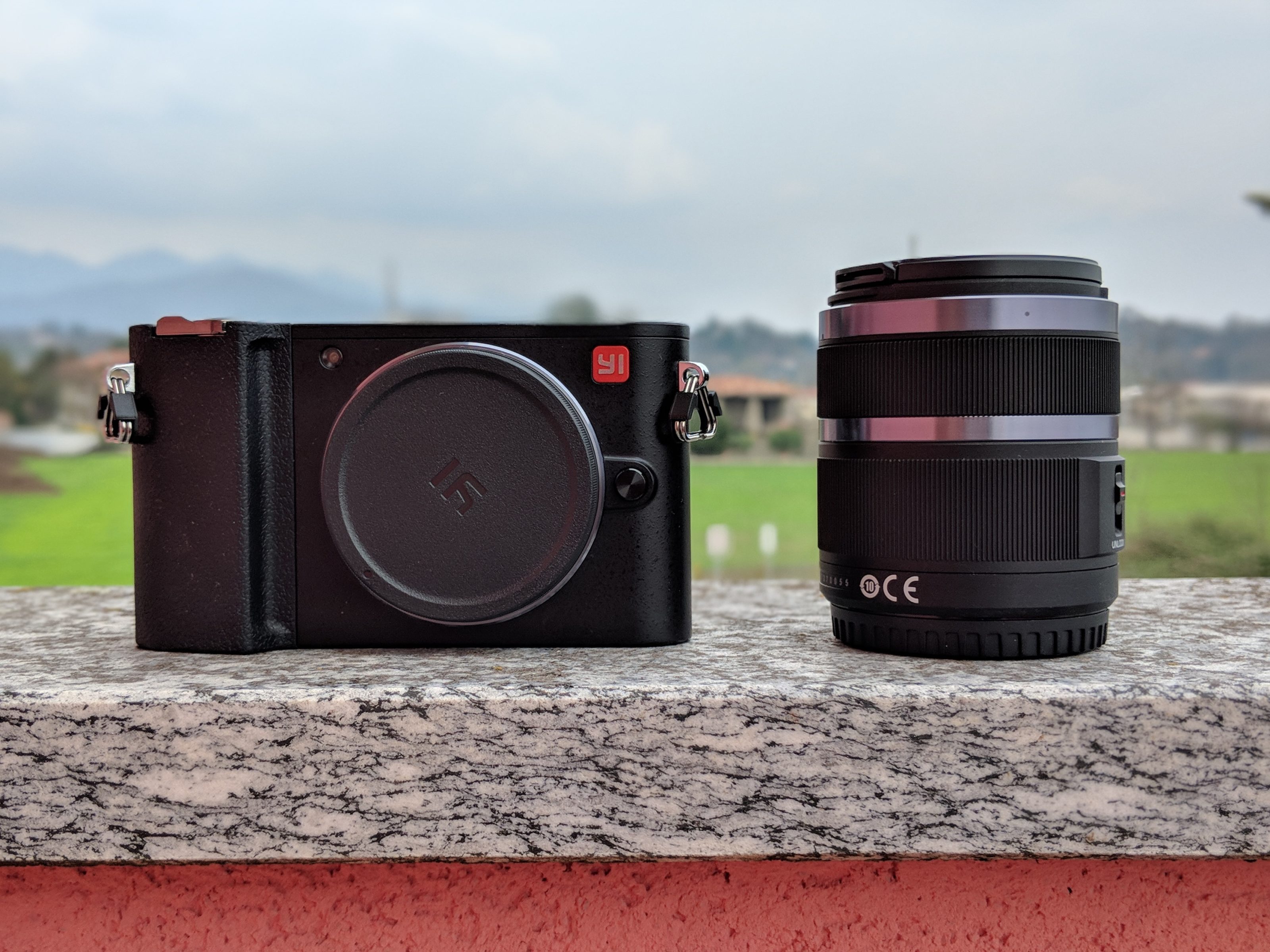
Controls and ergonomics
From a technical point of view, the Yi M1 can boast medium-level specifications: it is equipped with a 20 MP CMOS sensor IMX269 produced by Sony (MFT format) (which can reach 50 MP via interpolation), capable of shooting videos at a resolution up to 4K at 30 FPS. On the sensor, from the pure point of view of the component, it is difficult to argue. It is essentially the same sensor used for example by the Panasonic GX8 and the Olympus Pen F, but also by the Olympus OM-D M1 Mark II, considered the most advanced Micro 4/3 camera available on the market today.
Sensor aside, the Yi M1 offers 81-point contrast-detection autofocus, 3-inch 1.04MP LCD screen, ISO amplitude from 100 to 25,600, and mechanical and electronic shutters, which can achieve exposure times ranging from 60 seconds. up to 1/4000 of a second.
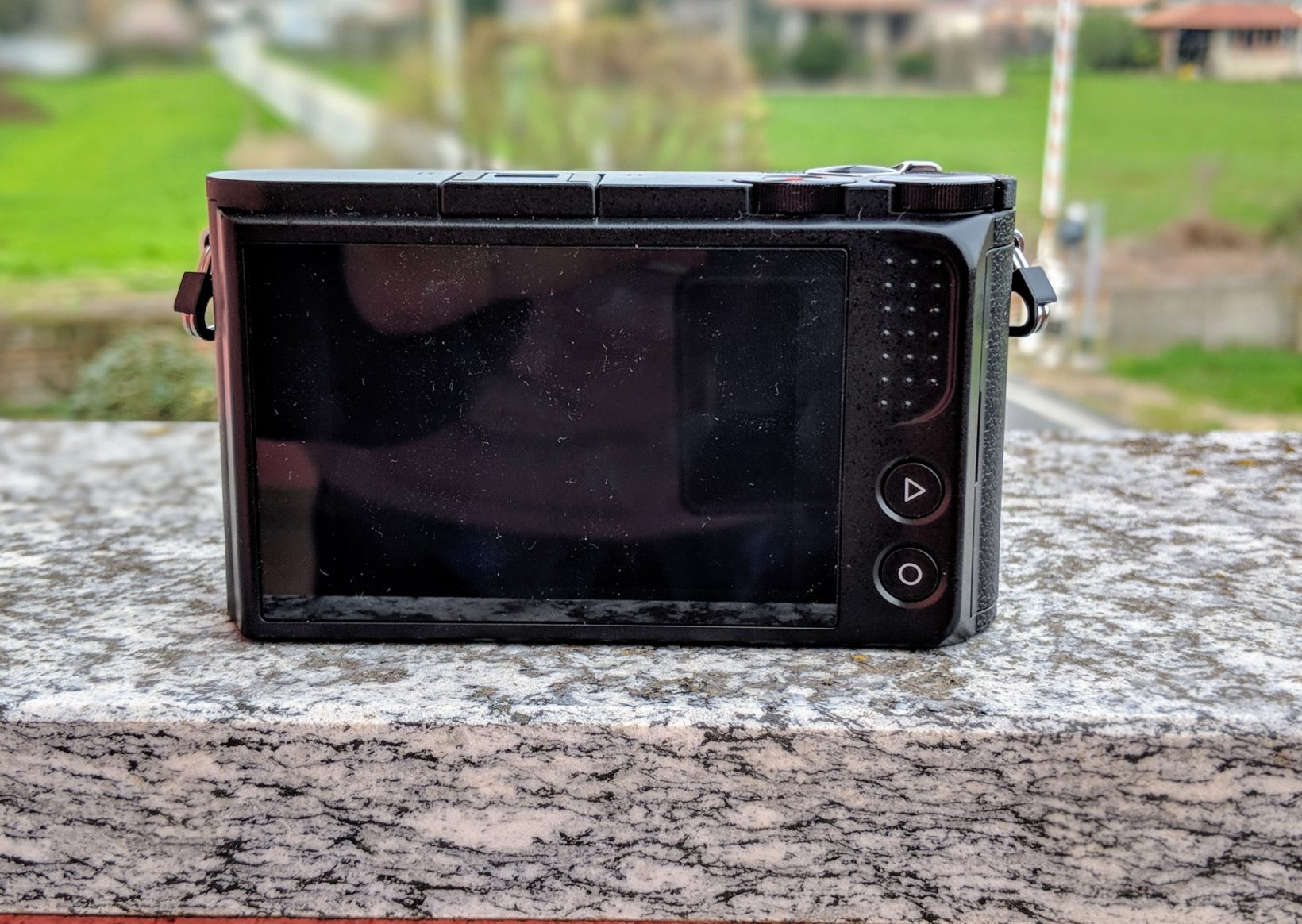
As evident, these are quite modest specifications today, for a camera that immediately does not focus entirely on performance but on balance and value for money.
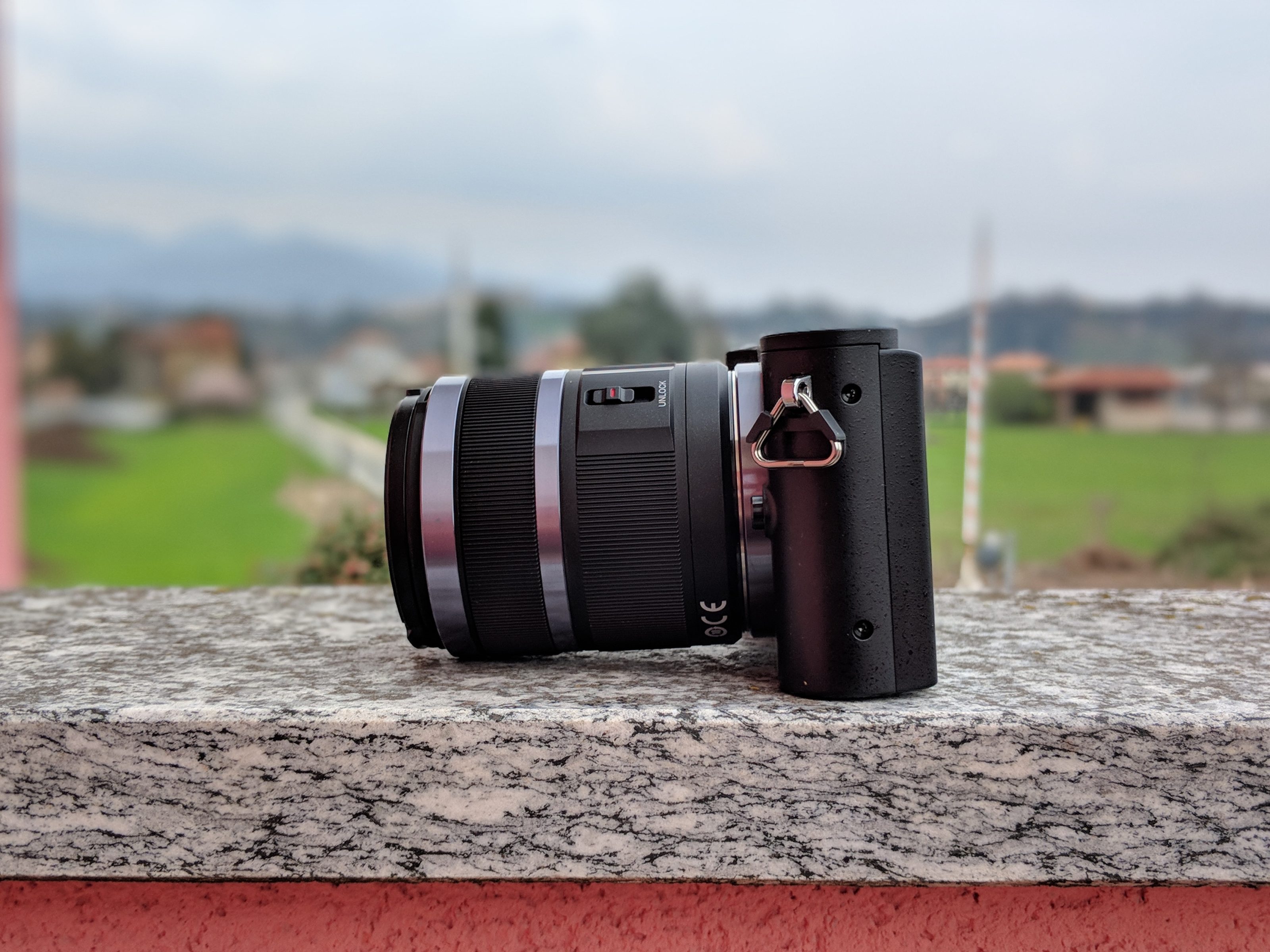
The dimensions of the camera body are decidedly reduced, we would say pocket-sized, very close to those of a simple compact; the overall footprint increases dramatically as soon as the YI 12-40mm F3.5-5.6 lens included in the model we tested is attached to it, making the camera anything but pocket-sized.
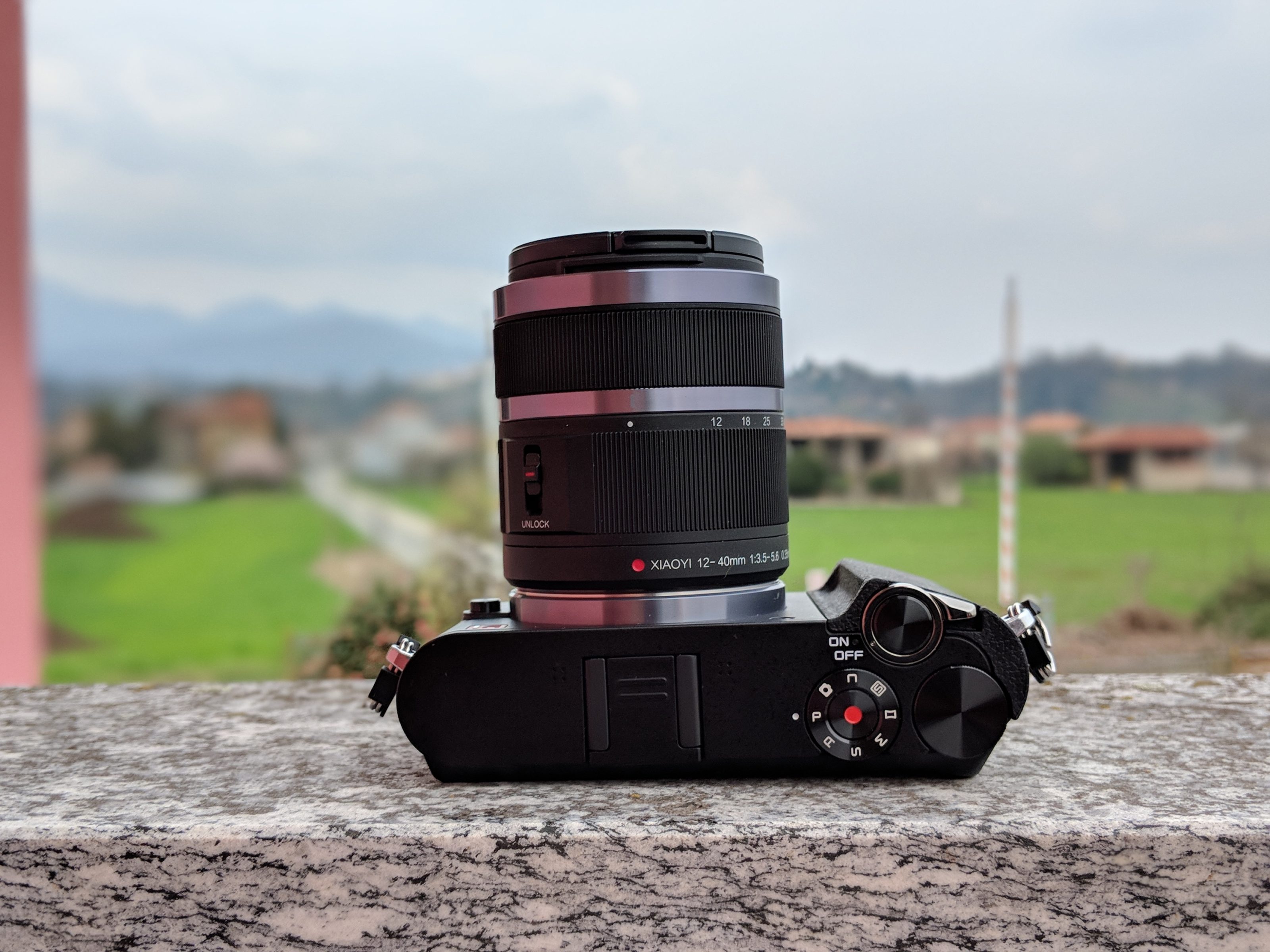
Aesthetically, the Yi M1 largely incorporates the style and philosophy that characterizes the original Leica T, with a clean and minimal chassis (made with a mix of metal and plastic), few physical buttons and most of the controls entrusted to the 3-inch touch screen. inches.
In addition to the red dot of the Yi brand (also this evident homage to Leica's iconic red dot), on the front the camera is totally devoid of buttons (apart from the optics eject button) and has the classic bulge of the handle, made in a rough plastic material, to ensure grip.
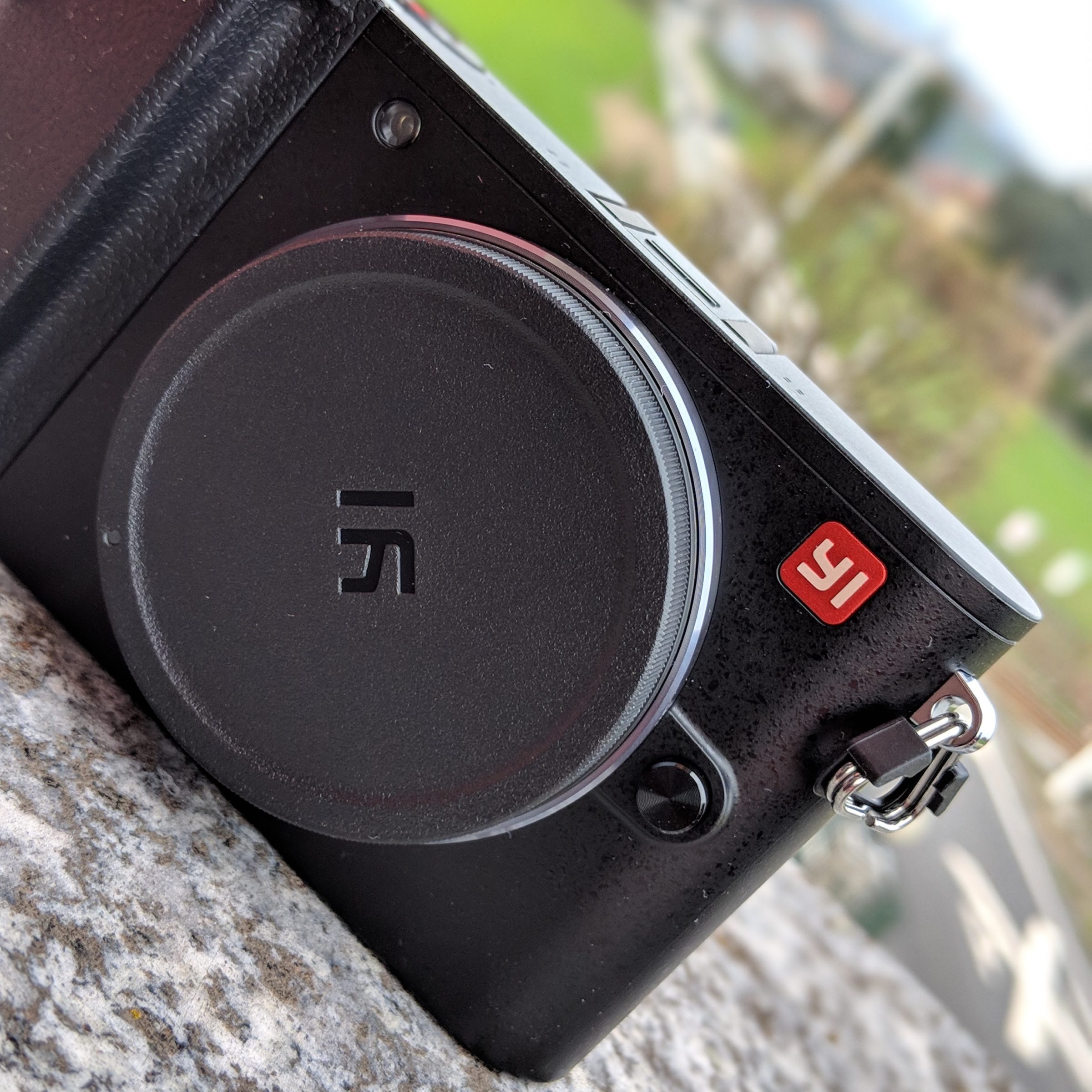
On the back there are only two buttons, a button for playback and a multi-function button; on the rear plate, the shutter button, the hot shoe, a lever for switching on and off and two dials, one dedicated to selecting the shooting mode and the other dedicated to different functions depending on the shooting modes and settings selected.
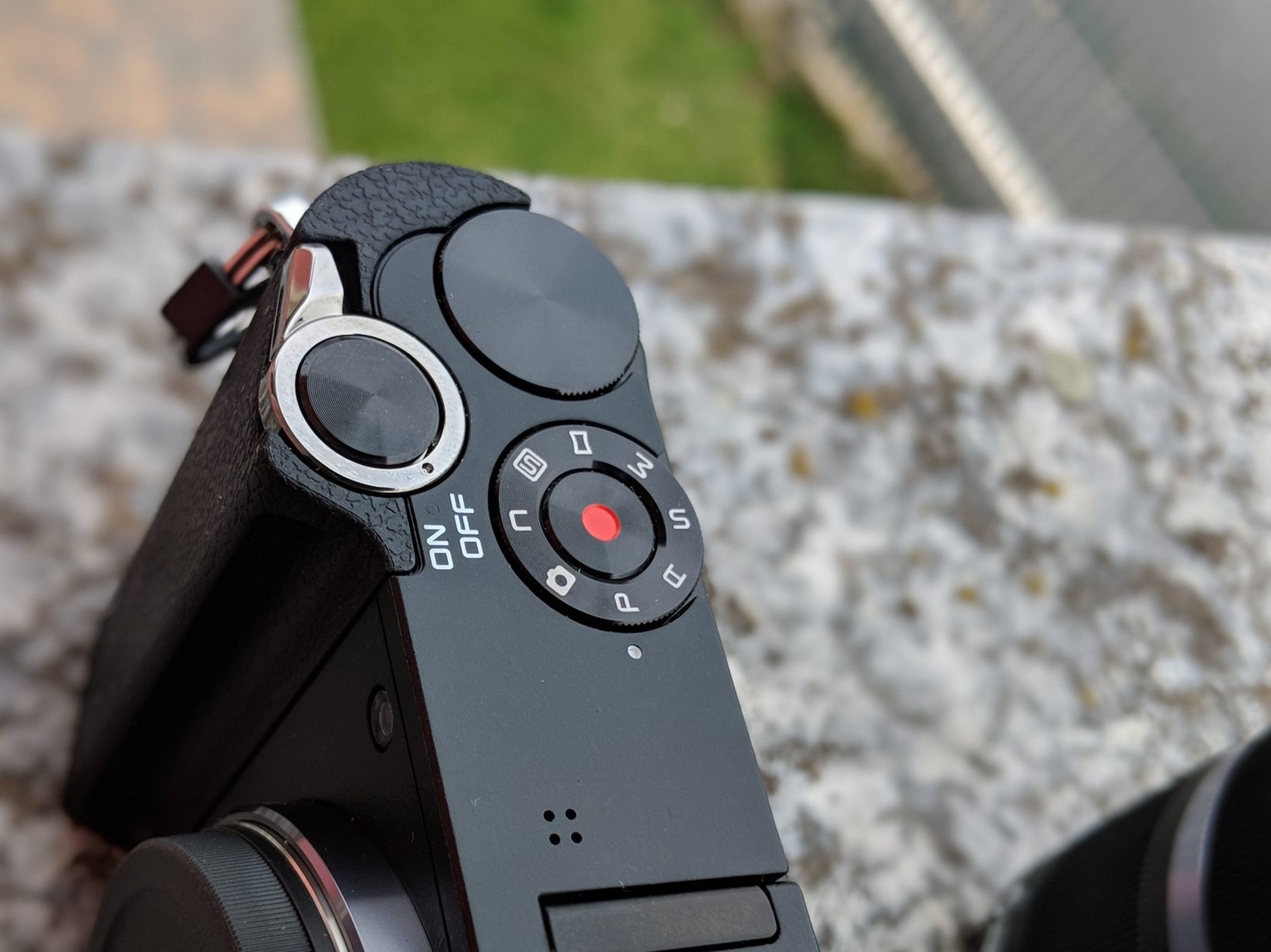
As mentioned, most of the settings and functions are controlled through the touch screen interface of the screen. Just as happened in the case of the Leica T, this choice places the Yi M1 in a more “modern” market segment aligned with many recently produced gadgets, where the touch screen has replaced most of the traditional physical buttons. Obviously this may not be considered by those who, like the most advanced photographers, prefer physical controls. In Micro 4/3 cameras, even in the entry level range, there are many more buttons than we find in Yi's M1.
The touch menu is certainly simple and easy to navigate and Xiaomi should be given the credit for simplifying the menu items as much as possible and making the navigation logic simple and intuitive (also considering the reduced number of configurable functions) compared to the similar camera menus, for example the confusing and intricate Olympus menus, where many interesting functions are buried under mountains of submenus and sub-sections.
The goal of creating a camera that is easy to use and configure is probably achieved, but the writer continues to think that on cameras the presence of comfortable physical buttons is still important and particularly useful: having to continuously interact with the menus and submenus of the touch screen makes some simple operations long and cumbersome that on other cameras are within reach of a few thumb presses.
As in the case of the Leica T, the decision to run after the touch at any cost is ultimately counterproductive and limits the convenience of those who are looking for quick and convenient access to the most basic functions in a camera.
Finally, the lack of an electronic viewfinder is felt as the touch screen does not seem to be particularly bright and has created many difficulties during photo sessions in bright light.
Performance and quality of image
On the performance side, with the Yi M1 it is possible to obtain decent results, even if we have not found anything capable of arousing enthusiasm; Sony's 20MP sensor, which we know for its good performance on other Olympus and Panasonic cameras, doesn't differ from what we've already seen, but the device's image processor just does its job.
The colors obtained are well balanced – although in some cases the automatic white balance is very inaccurate – and with the kit lens YI 12-40mm F3.5-5.6 it is possible to obtain good results in terms of sharpness, without particular defects of flare or chromatic aberration.
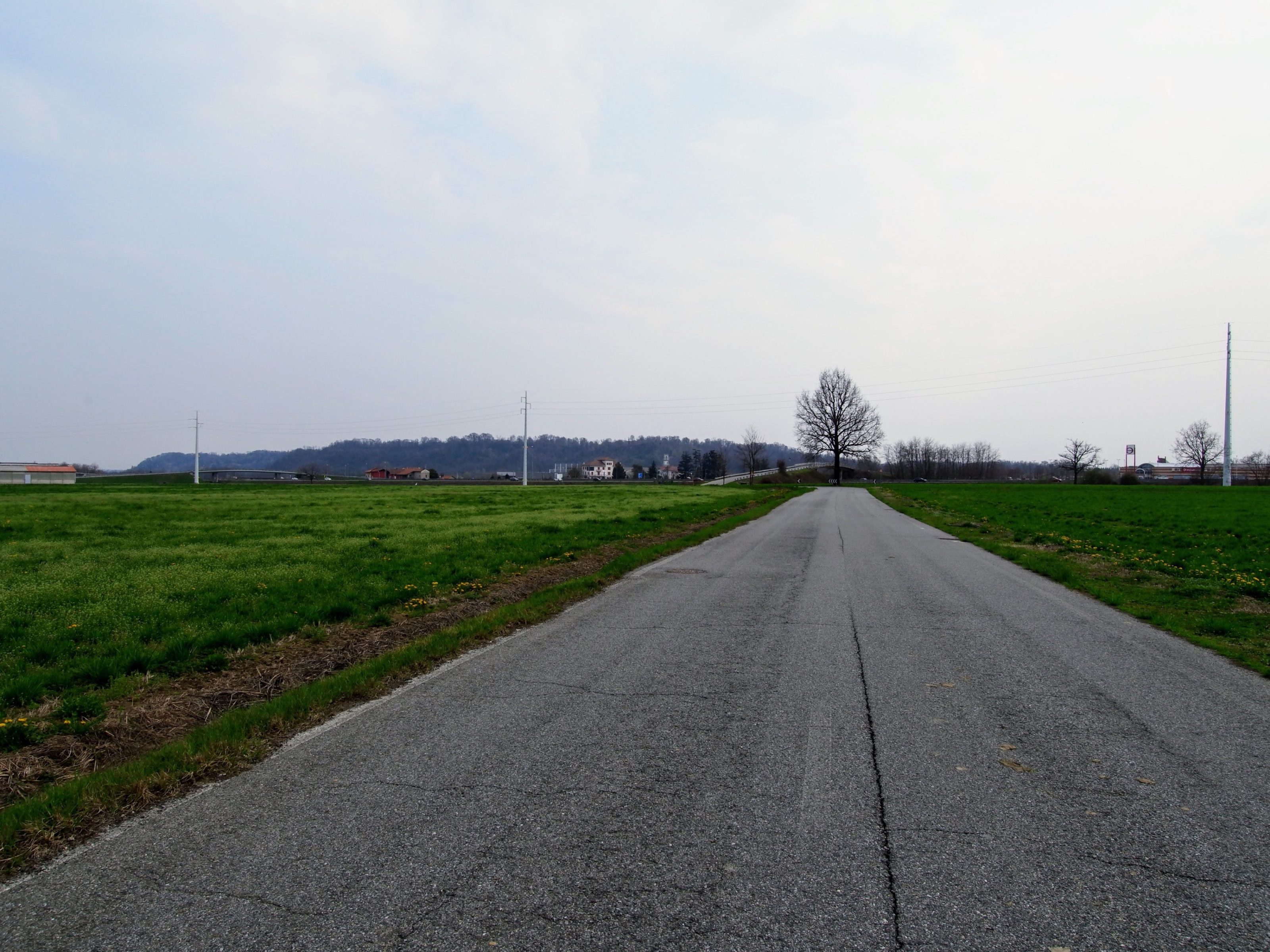 YI DIGITAL CAMERA
YI DIGITAL CAMERA
Nothing to say about the performances in low light either, which confirm the advantages and, at the same time, the limits of the Yi M1: good results up to ISO 800, usable up to 1600, and then exceeding in noise beyond this threshold.
 YI DIGITAL CAMERA
YI DIGITAL CAMERA
 ISO 100
ISO 100
 ISO 200
ISO 200
 ISO 400
ISO 400
 ISO 800
ISO 800
 ISO 1600
ISO 1600
 ISO 3200
ISO 3200
 ISO 6400
ISO 6400
 ISO 12800
ISO 12800
 ISO 25600
ISO 25600
The biggest drawback of this camera, however, is the lack of any optical stabilization: neither the camera body nor the YI lenses available on the market include any form of optical stabilization. The only solution here is a bland form of digital stabilization included with the camera. To have stabilization you need to use Panasonic lenses which are optically stabilized, but this will increase the price of a set with a Yi body.
The absence of a stabilizer is linked to the price factor, but it is a decidedly counter-current choice if we consider that most of today's cameras include some form of optical stabilization, if not in the camera body at least in the basic lenses included.
If you consider that the recent Olympus PEN E-PL9, a potential competitor of the YI M1, includes a 3-axis stabilizer in the camera body and, if necessary, it is also possible to choose, it also presents an optical kit with stabilizer included, you realize how much the choice Xiaomi can significantly reduce the palatability of its device in terms of performance.
The absence of stabilization also negatively affects the results that can be obtained in low light: all good as long as the YI M1 is used with a tripod, but in manual shooting, occasions in which the stabilizers make a difference to compensate for the flickering effect. , it is necessary to keep the shutter speed always fast enough, often no less than 1/60 of a second, in order not to run into choppy shots.
 YI DIGITAL CAMERA
YI DIGITAL CAMERA
Autofocus deserves a separate discussion. During our test we found substantial unreliability. In addition to being anything but fast, in many cases it was not able to correctly lock the subject we wanted to focus on, not even taking advantage of the convenient tap-to-focus function present thanks to the touch screen.
After a few days of testing, however, we updated the camera firmware to version 3.1 using the smartphone app; after the update, the difficulties in focusing have completely ceased, although the system certainly does not shine for speed and speed. The update has therefore made the autofocus more reliable, but its speed has still left something to be desired.
 In some shots the level of detail is valuable
In some shots the level of detail is valuable 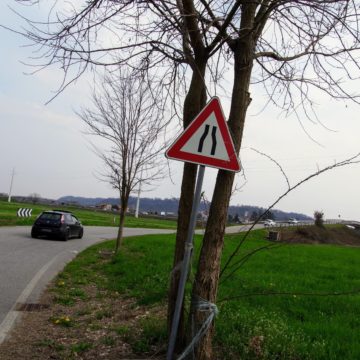 The Yi M1 can handle complex scenes
The Yi M1 can handle complex scenes  The shots in the dark are all 'other than perfect
The shots in the dark are all 'other than perfect  Good dynamic range
Good dynamic range 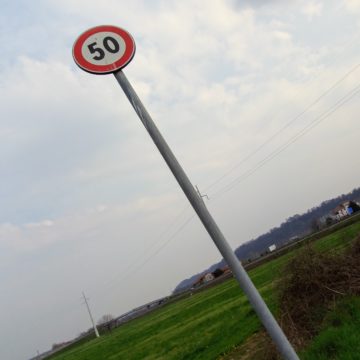 True colors in most shots
True colors in most shots  In low light the results can be good
In low light the results can be good  In this image the white balance is clearly oversized
In this image the white balance is clearly oversized  On other occasions the colors are brighter
On other occasions the colors are brighter  No flare problems noticeable
No flare problems noticeable  In shots like this the absence of stabilizer is felt
In shots like this the absence of stabilizer is felt  In this image the details obtained by the optics stand out
In this image the details obtained by the optics stand out
Conclusions
After a few days of testing the YI M1 it emerges that the real strength of this camera is the price. As mentioned, the YI M1 can in fact be purchased for 349 euros with the YI 12-40mm F3.5-5.6 kit lens. This is currently the lowest price to get your hands on a brand new MFT camera; the aforementioned Olympus PEN E-PL9 is always sold on Amazon at a practically double price, a cost justified by undeniable performance and advantages from a technological point of view. But if the problem is the wallet, the Yi wins hands down.
In short, Yi Technologies focuses fully on the quality / price ratio: to date no MFT camera is able to offer so much at such a reduced price. Much of the entry level competitors, sold at higher prices, usually around 500 euros or less, include a 16MP sensor, whereas the YI M1 can boast the same 20MP sensor seen in the Olympus and Panasonic flagship ranges.
Probably if it were sold at a higher price, it would be difficult to pretend that some of the many flaws listed during our discussion, such as slow autofocus, lack of stabilization or poor design choices, do not exist. However, considering the performance in terms of pure image quality and the really attractive price, we can only recommend this camera to anyone who wants to approach the MFT format by spending as little as possible. You can also think of getting some lenses, maybe not new, from Panasonic to have the stabilization or some Olympus-Zuiko lenses to start getting a kit and then maybe in the future move on to other products and at the same time experiment the format. In this case, the 350 euros are an opportunity that once again only Yi Technologies is able to offer.
Pro
Cons
,,





